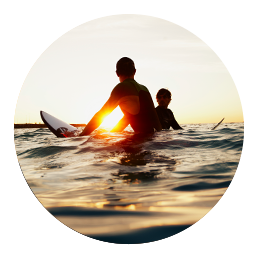 Shark activity map
Shark activity map
Switch on your Sea Sense.
Read more
Latest shark advice and warnings.
Read More










News & Alerts
Seabed receivers to track white shark movements in WA
18 February 2019- 240 seabed receivers to be used in SMART drumline trial to track fine-scale movements of tagged sharks
- Seabed monitors are in addition to three new real-time tagged shark detection receivers deployed in Gracetown
- Non-lethal SMART drumline trial to get underway before the end of this month
With the McGowan Government's scientific non-lethal SMART drumline trial fast approaching, 240 seabed monitors are now being deployed off the South-West coast that will gather detailed scientific data on tagged shark movements.
The seabed monitors, known as VR2 receivers, collect fine-scale movement data from tagged sharks, and are being placed around the trial zone and along surf breaks from Cape Naturaliste to Margaret River.
The layout of these seabed monitors has been designed to gather data to determine if sharks relocated during the trial come back close to the beach or remain offshore. The data from these receivers will be retrieved every four months by Department of Primary Industries and Regional Development officers to build a more comprehensive picture of white shark movements off the South-West coast.
This information will be used by Chief Scientist Peter Klinken for his independent scientific assessment of the effectiveness of the SMART drumline technology in reducing the risk of a shark attack in WA. This independent scientific assessment will help guide a long-term decision about the use of SMART drumlines in WA.
These new receivers complement three new real-time, tagged shark detection satellite-linked receivers deployed in Gracetown in December. These satellite-linked receivers alert authorities and ocean users when a tagged shark is within range of the receiver, whereas the seabed monitors store data that will be manually downloaded during the trial.
Since March 2017, the McGowan Government has extended the Shark Monitoring Network in the Capes region and to Esperance. There are now 30 receivers along the WA coast providing near real-time alerts of tagged sharks detected within the receivers' range.
For more information, visit https://www.sharksmart.com.au
Comments attributed to Fisheries Minister Dave Kelly:
"Quality science is crucial to developing our State's shark mitigation strategies and saving lives.
"The deployment of these seabed monitors will enable us to gather information about whether sharks relocated during the trial come back close to the beach or remain offshore.
"This data will be used by the Chief Scientist Peter Klinken for his independent scientific assessment into the effectiveness of the technology in reducing the risk of shark attacks in WA.
"These seabed monitors will not only detect sharks tagged during the trial but also previously tagged sharks, which will help improve our understanding of white shark movements in WA.
"I look forward to seeing what new information this trial provides our scientific community about white shark movements in WA."
Minister's office - 6552 6100